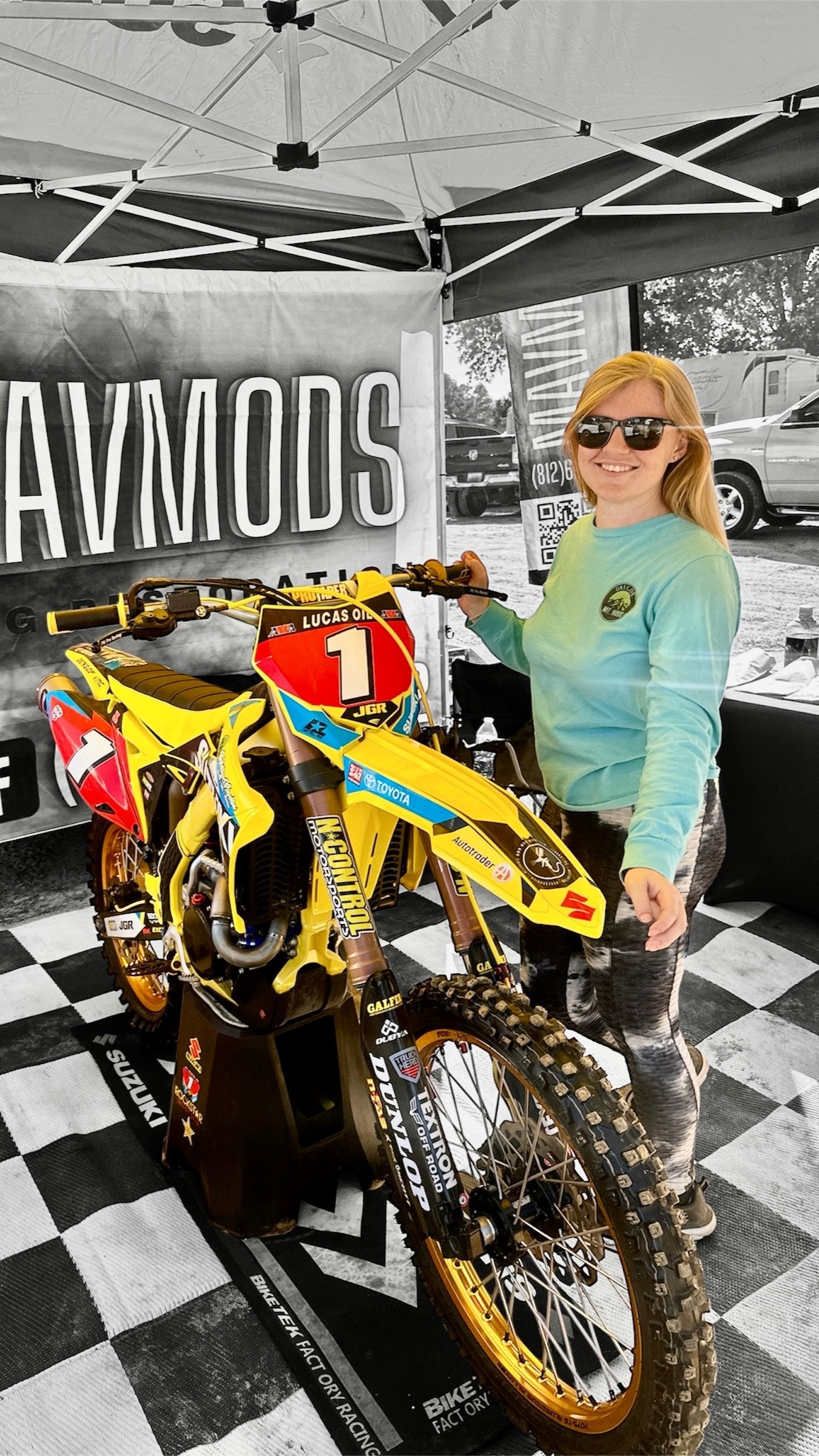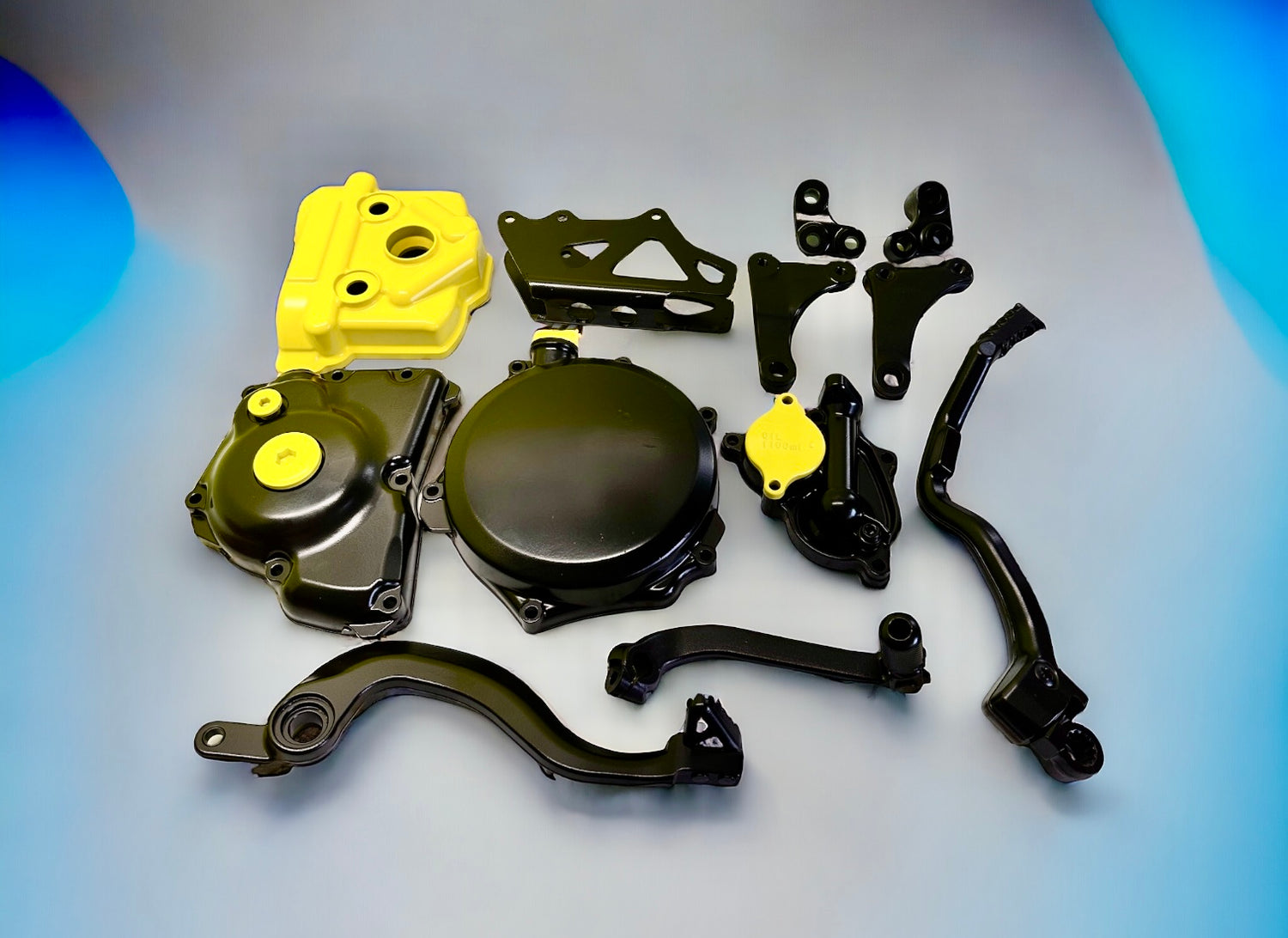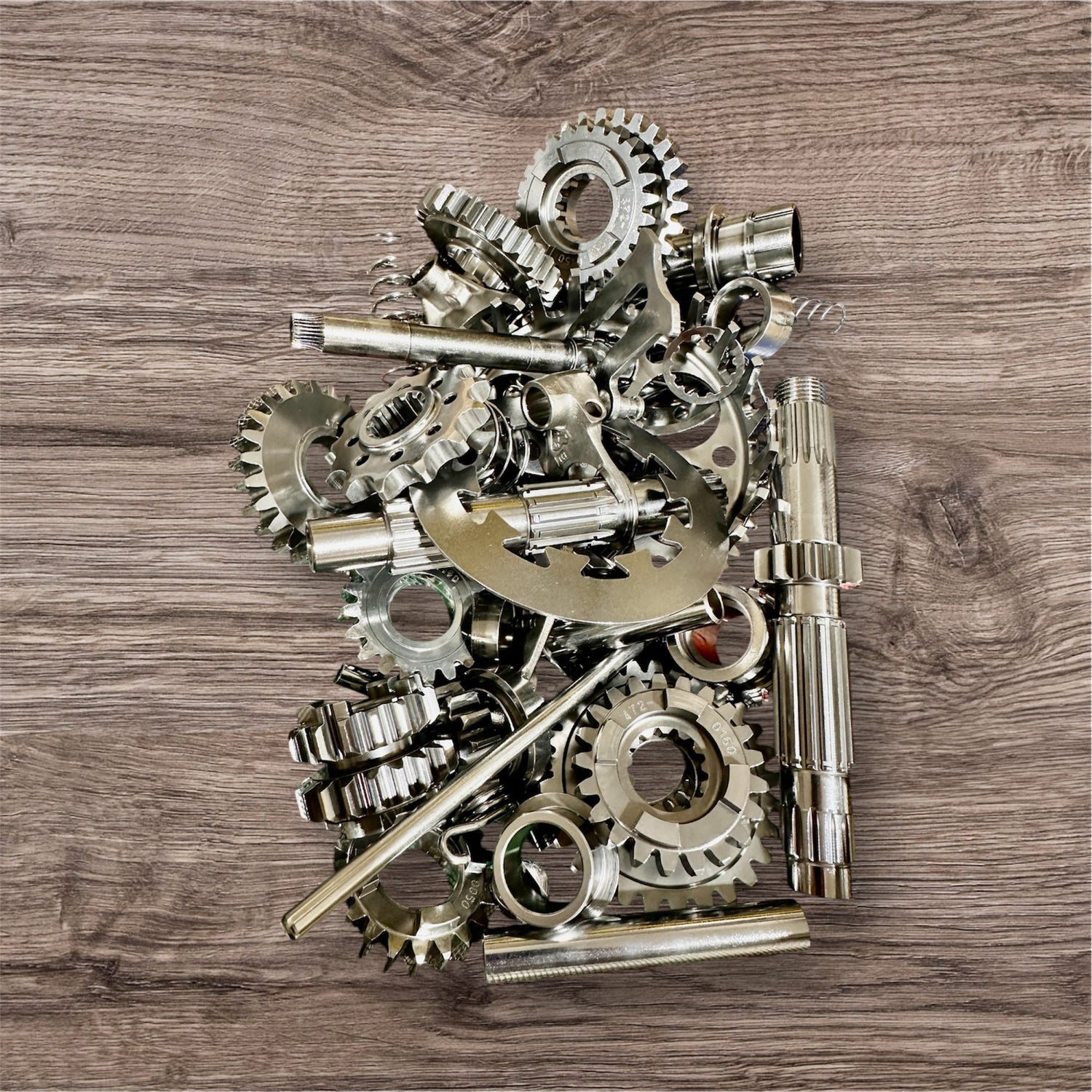
WHAT IS MAVMODS
Welcome to Mav Mods, your go-to destination for premium custom coatings and restoration services.
We specialize in a variety of top-notch finishing techniques, including:
Powder Coat
Cerakote
Vapor Blast - Vaporhone
Tumble Polish.
Elevate your items with Mav Mods and experience the perfect blend of aesthetics and performance.
WHY CERAKOTE

PROTECTION
Has outstanding protection against Rust, UV, And Salt
COLOR SELECTION
Cerakote has the best color selection available. From factory Hrc team finishes to vibrant shades. 200 available colors.
HIGH HEAT APPLICATIONS
Certain finishes can reach up to 1,800 degrees to better protect your product. Perfect for motors or exhaust options. CLICK TO SEE HIGH HEAT COLORS
ORIGINAL PRODUCT SIZE
Does not distort, or weaken the original material. Unlike powder coating, cerakoting remains the original size. This application is great for forks, bolts and other tight areas.
WHEN TO USE POWDERCOAT

DURABILITY REQUIREMENTS
Powder coating is ideal for items that will be subjected to harsh environments or heavy use. Its tough, resilient finish provides superior protection against scratches, chipping, fading, and wear, making it an excellent choice for outdoor furniture, automotive parts, and industrial equipment that need to withstand the elements or mechanical stresses.
AESTHETIC APPEAL
When a visually striking appearance is crucial, powder coating can provide a wide range of color and texture options. This versatile finishing process allows for creative customization, making it perfect for decorative items, architectural features, or consumer products where visual impact is a key selling point.
ENVIRONMENTAL CONSIDERATIONS
For projects that prioritize eco-friendliness, powder coating is a wise choice due to its low volatile organic compound (VOC) emissions. Unlike traditional liquid paints, powder coatings do not require solvents, which means they release fewer harmful chemicals into the environment. This makes powder coating suitable for businesses looking to meet sustainability goals or comply with environmental regulations.
COST-EFFECTIVENESS
Finally, powder coating can be more cost-effective in the long run. While the initial setup costs may be higher than other finishing options, the durability and low maintenance requirements result in lower lifecycle costs. For manufacturers and businesses seeking longevity and performance from their products, powder coating presents an economical solution that minimizes the need for frequent refinishing or repairs.
BENEFIT OF TUMBLE AND POLISH

ENHANCED AESTHETIC APPEAL
Tumble and polish methods significantly improve the visual qualities of materials, resulting in smoother surfaces and enhanced shine. This not only increases the aesthetic value of the items but also makes them more appealing to customers or collectors. Whether it’s gemstones, metals, or ceramics, a polished look can elevate a piece from ordinary to extraordinary.
IMPROVED DURABILTY
The tumbling process helps to remove sharp edges and rough spots, which not only enhances the appearance but also strengthens the material. By smoothing out imperfections, the likelihood of chipping or cracking is reduced, increasing the overall longevity and durability of the finished product. This is particularly important for items that will see regular use.
VERSATILE APPLICATION
Tumble and polish techniques are versatile and can be applied to various materials, including stones, metals, and glass. This flexibility opens up a wide range of creative possibilities for artists and craftsmen. It allows for the creation of diverse products, from finely polished jewelry to beautifully finished decorative objects, catering to the demands of different markets.
SURFACE SMOOTHNESS
One of the primary benefits of tumbling and polishing is achieving a highly smooth surface. This process removes rough edges and imperfections, resulting in a polished product that feels pleasant to the touch and is visually appealing. This process is ideal for transmissions.
VAPOR BLAST VS SAND BLAST

INTRODUCTION TO VAPOR BLASTING AND SAND BLASTING
Vapor blasting and sand blasting are both popular surface finishing techniques used in various industries, including automotive, aviation, and manufacturing. While both methods aim to clean, polish, and prepare surfaces, they differ significantly in their processes and results. Vapor blasting, also known as wet blasting, utilizes a mixture of water and abrasive media to create a smoother finish while minimizing dust and contamination. On the other hand, sand blasting uses high-pressure air to propel dry abrasive materials against a surface, effectively removing coatings and contaminants but often leaving a rougher texture. As industries and applications evolve, understanding the unique benefits and limitations of each method becomes crucial for selecting the right approach for specific projects.
THE PROCESS OF VAPOR BLASTING
Vapor blasting involves the use of a specialized machine that combines water with abrasive particles, creating a slurry that is gently propelled against the surface being treated. This process dampens the dust typically associated with traditional abrasive methods, making it safer for operators and the environment. The water acts as a lubricant, allowing the abrasive media to effectively clean the surface without causing damage. This is particularly beneficial for delicate components such as aluminum parts, where a gentle touch is essential. Additionally, the vapor blasting process tends to enhance the surface finish, leaving it smoother and more refined, which is often desired in applications requiring high aesthetic standards.
THE MECHANISM OF SAND BLASTING
Sand blasting, also known as dry blasting, is a more traditional and widely recognized abrasive cleaning method. It employs a high-velocity stream of dry abrasive material, such as sand, glass beads, or aluminum oxide, propelled by compressed air or mechanical means. This method is highly effective for removing stubborn coatings, rust, and contaminants from a variety of surfaces. However, it can generate a significant amount of dust, which can pose health risks and environmental concerns. Moreover, the aggressive nature of sand blasting can lead to surface etching or damage if not carefully controlled, making it essential to assess the compatibility of the substrate material before choosing this method.
CHOOSING THE RIGHT METHOD FOR YOUR NEEDS
Deciding between vapor blasting and sand blasting depends largely on the specific requirements of a project. If a smooth, polished finish is essential, or if working with delicate components, vapor blasting is often the superior choice due to its gentle yet effective cleaning capabilities. Conversely, for heavy-duty surface preparation or removal of thick coatings, sand blasting may be more efficient and faster. It's also worth noting that the environmental impact and potential safety hazards of each method should be considered. Ultimately, evaluating the material type, finish requirements, and safety considerations will help determine the most appropriate blasting technique to achieve optimal results.
